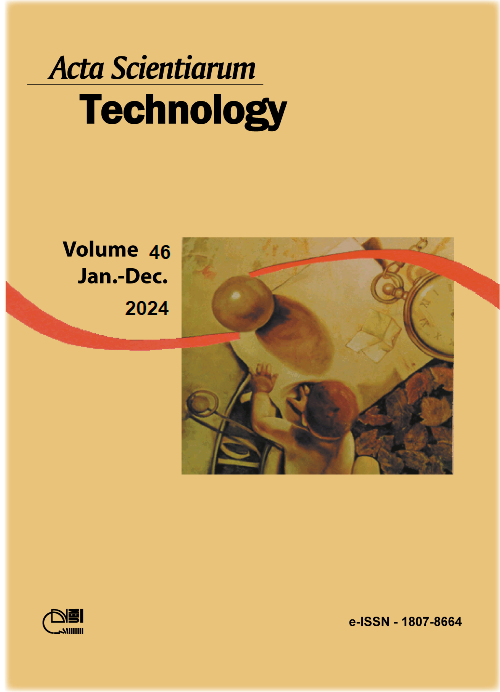A modeling strategy for the simulation of box sections with layered shell elements
DOI:
https://doi.org/10.4025/actascitechnol.v46i1.65754Palavras-chave:
girders; concrete structures; finite-element modeling.Resumo
This paper presents a numerical strategy to model box sections from bridge girders using horizontal layered shell finite elements. The basic idea is to avoid the construction of more computational expensive meshes based on the use of folded shell and brick finite elements. The numerical strategy imposes the deactivation of those layers related to empty spaces within the bridge cross-section. The performance of this technique is explored by means of two demanding practical applications related to bridge structures with constant and variable deck thicknesses. The first application deals with the static truck load test of the Caynarachi Bridge, located in Peru, and for which measured field data exists, while the second application is related to the construction stage analysis of a box bridge structure including time effects due to concrete creep, shrinkage and steel relaxation. The results demonstrate that the studied technique acceptably correlates with the measured field data,expressed in terms of vertical displacements,with correlation coefficients exceeding 0.94.Additionally, the outcomes align well with the results of other numerical techniques, allowing applicants to use this simplified modeling approach in daily design office.
Downloads
Downloads
Publicado
Como Citar
Edição
Seção
Licença
DECLARAÇíO DE ORIGINALIDADE E DIREITOS AUTORAIS
Declaro que o presente artigo é original, não tendo sido submetido í publicação em qualquer outro periódico nacional ou internacional, quer seja em parte ou em sua totalidade.
Os direitos autorais pertencem exclusivamente aos autores. Os direitos de licenciamento utilizados pelo periódico é a licença Creative Commons Attribution 4.0 (CC BY 4.0): são permitidos o compartilhamento (cópia e distribuição do material em qualqer meio ou formato) e adaptação (remix, transformação e criação de material a partir do conteúdo assim licenciado para quaisquer fins, inclusive comerciais.
Recomenda-se a leitura desse link para maiores informações sobre o tema: fornecimento de créditos e referências de forma correta, entre outros detalhes cruciais para uso adequado do material licenciado.















